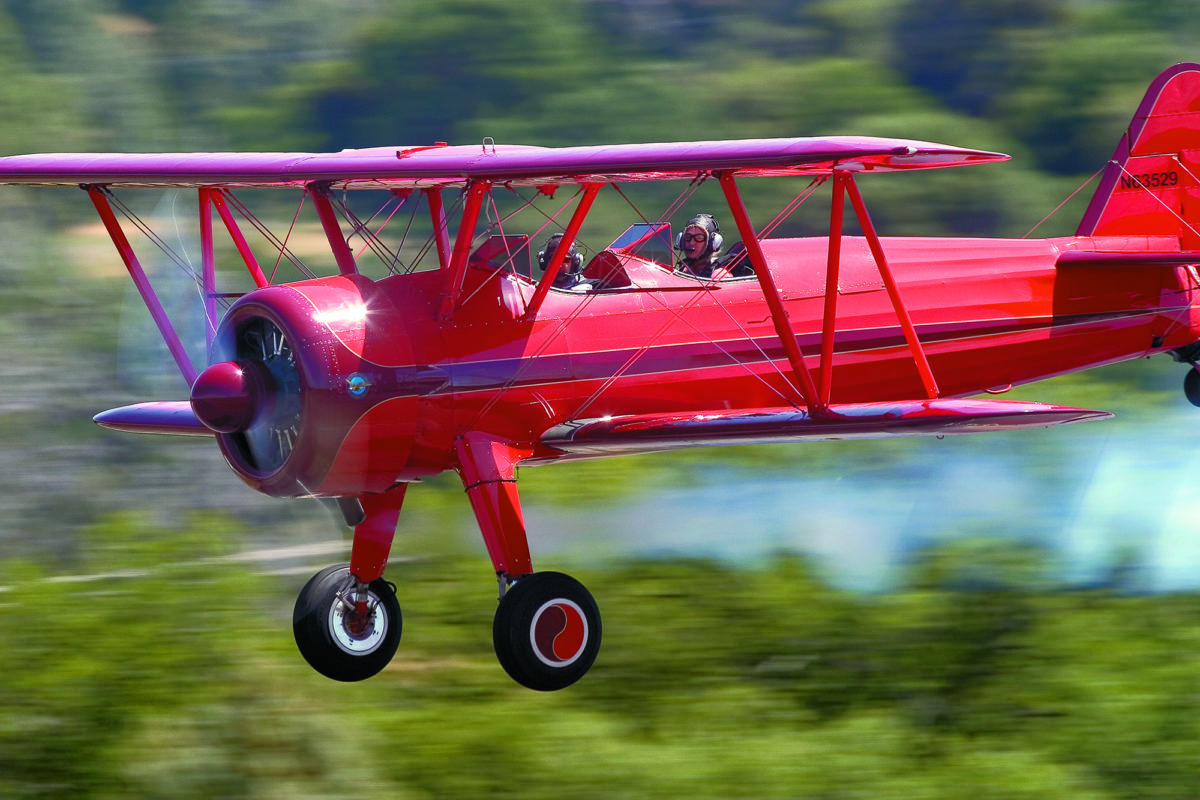In his day, Lloyd Stearman was as well known as aviation giants Clyde Cessna, Walter Beech and E.M. “Matty” Laird, all of whom he worked with at one time or another. Today Stearman’s name is most often associated with the Boeing-Stearman Model 75, a ubiquitous World War II trainer called the Kaydet but universally known to biplane aficionados as “the Stearman.” More than 8,500 were built, and many are still flying, making it one of the most famous biplanes in aviation history. Ironically, Stearman himself was not directly involved with its design or construction.
Stearman was 12 when he saw his first aircraft at a public exhibition in 1911. The fragile monoplane was piloted by none other than Clyde V. Cessna, a former car salesman from Enid, Okla., turned intrepid aviator. Stearman began his own aviation career under the supervision of another pioneer airman, Matty Laird, who had moved from his home in Chicago to Wichita, Kan., to form the E.M. Laird Company with businessman Jacob “Jake” Moellendick. That move would eventually lead to the transformation of the “Wheat Capital of the World” into the “Air Capital of the World,” and Lloyd Stearman would play a leading role in that unfolding story.
Although he was hooked on aviation from the start, it was not his initial choice as a vocation. Stearman had set his sights on becoming a civil engineer, and in 1917 he enrolled at Kansas State Agricultural College. After the United States entered World War I, however, he responded to the call to arms by enlisting in the U.S. Navy Reserve Flying Corps in August 1918.
Stearman was chosen for flight training and eventually soloed in a Curtiss N-9 floatplane at Naval Air Station North Island near San Diego, Calif. The war ended before he could earn his wings, but he did manage to qualify as a master airplane rigger.
After the war, Stearman returned to his hometown of Harper, Kan., and pondered his future. In 1919 he accepted a job with the S.S. Voight company in Wichita, where he worked as a journeyman architect and draftsman. One day he read an advertisement calling for workers to build the Swallow biplane at Matty Laird’s company. Stearman jumped at the opportunity to enter the aviation business, and was soon busy building Swallows and helping Laird with engineering tasks. Stearman’s engineering background and drafting abilities were put to good use, and before long he was supervising workers.
In the autumn of 1923 Laird resigned from the company and returned to Chicago. Three years of growing distrust and heated disagreements with the headstrong Moellendick had taken their toll, and Laird knew it was time to leave. As a result, Moellendick reorganized the company and promoted Stearman to chief engineer. His first task was to design a replacement for the Swallow.
Dubbed the New Swallow, the redesigned biplane first flew in December 1923 and was hailed as a major innovation by pilots. Stearman, with input from co-worker and factory manager Walter Beech, incorporated several technical and aerodynamic improvements into the aircraft, such as a metal cowling around the 90-hp Curtiss OX-5 V8 engine, a reserve fuel tank and a new landing gear arrangement.
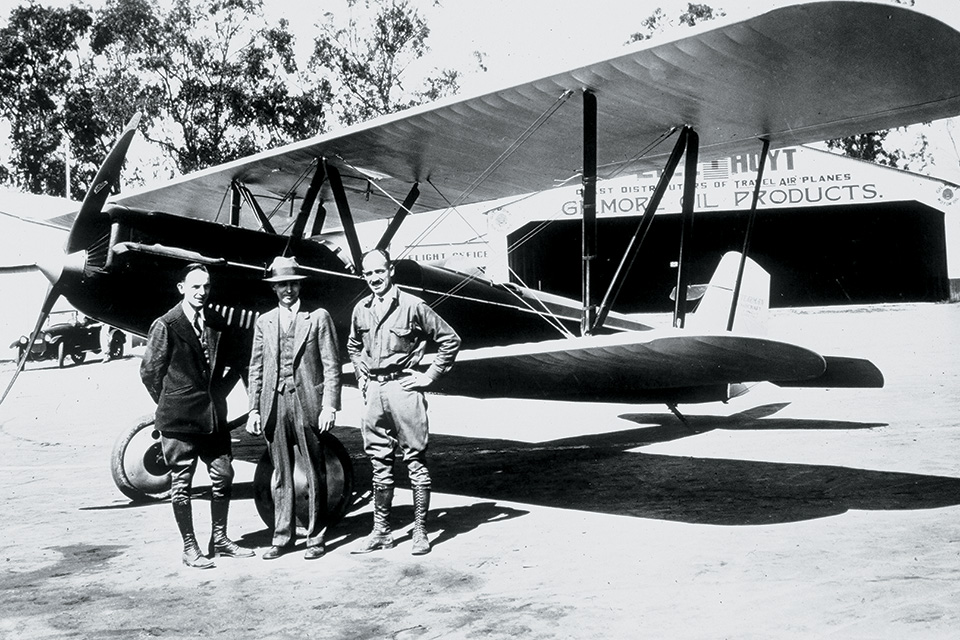
The New Swallow was an immediate success. Not only was the airplane heralded by pilots and the press as a significant step forward for commercial aviation, it lifted Lloyd Stearman’s name into the national spotlight for the first time. In 1924 Stearman was ready to take the New Swallow to the next level by replacing the wood fuselage structure with welded steel tubing. Beech agreed, but Moellendick rejected the idea and forbade any changes, reportedly telling the pair that if they didn’t like it, “there’s the door.”
Stung by Moellendick’s intransigence, Stearman and Beech made a bold move—they resigned and, in partnership with Clyde Cessna and a group of Wichita businessmen, founded the Travel Air Manufacturing Company late in 1924. Stearman already had a new design ready for production. Known as the Model A, it was essentially an upgraded version of the New Swallow incorporating the welded steel tube structure that he and Beech had championed.
During the next two years Stearman designed a series of biplanes for the company and engineered the Model A to accept installation of the new J-4 9-cylinder, air-cooled radial engine built by the Wright Aeronautical Company. Known as the Model BW, the new Travel Air was the first of a family of radial-powered airplanes to roll off the production line. Travel Air soon became a major force in the infant commercial air carrier business, thanks largely to the combination of Stearman’s design prowess and Beech’s salesmanship.
GET HISTORY’S GREATEST TALES—RIGHT IN YOUR INBOX
Subscribe to our HistoryNet Now! newsletter for the best of the past, delivered every Wednesday.
Though Travel Air was growing rapidly, Stearman soon became restless, and he looked westward to California for his next challenge. In the autumn of 1926 he resigned from Travel Air and, in partnership with aviator Fred Day Hoyt and businessman George Lyle, formed Stearman Aircraft, Inc., located at famed Clover Field in Santa Monica. Hoyt, a well-known Hollywood stunt pilot, had convinced Lloyd that they could sell aircraft to wealthy actors and to operators of the growing contract airmail business. For Stearman it was a golden opportunity to run his own airplane company.
A small building in nearby Venice served as a fabrication facility, with final assembly and flight testing carried out at Clover Field. Stearman’s latest design and the first to bear his name was dubbed the C1. The elegant biplane, completed in March 1927, boasted aesthetic appeal from spinner to rudder. Powered by the ubiquitous Curtiss OX-5, the C1 accommodated a pilot in the aft cockpit and two passengers or mail in the front cockpit.
The C1 was followed by the C2 and later the C2M, powered by a Wright J-4. The J-4 was a perfect match for the C2M’s rugged airframe. Stearman had been quick to realize that radial engines were the wave of the future for commercial and military aviation. Although the OX-5 was cheap and available in large numbers as war surplus equipment, by 1927 it was obsolete.
The C2M was one of the first planes specifically designed to meet the demanding requirements of airmail operators. It could carry up to 400 pounds of mail and was capable of flying about 500 miles at a cruising speed of 110 mph. Stearman’s first customer, Varney Air Lines, put the C2M into service in late summer 1927.
After less than a year of operation, Stearman Aircraft faced a growing list of orders for new airplanes but lacked sufficient capital and facilities to build them. Stearman and his associates hoped that a group of California investors would come to their rescue. Instead some Wichita businessmen who were old friends of Stearman’s proposed that he relocate to Wichita. Led by Walter P. Innes Jr., the group raised more than $60,000 in just a few days and convinced Stearman that the future of his company was in Kansas, not California.
Stearman liked the West Coast and had many friends there, but he couldn’t pass up the opportunity. In October 1927 the renamed Stearman Aircraft Company resumed operations in a vacant railroad car factory north of Wichita. Allied with friend and fellow engineer Mac Van Fleet Short, who had joined the company in Santa Monica, Stearman designed a series of improved biplanes, including the C2B, the C3B and the larger M-2 Speed Mail aimed at the airmail industry.
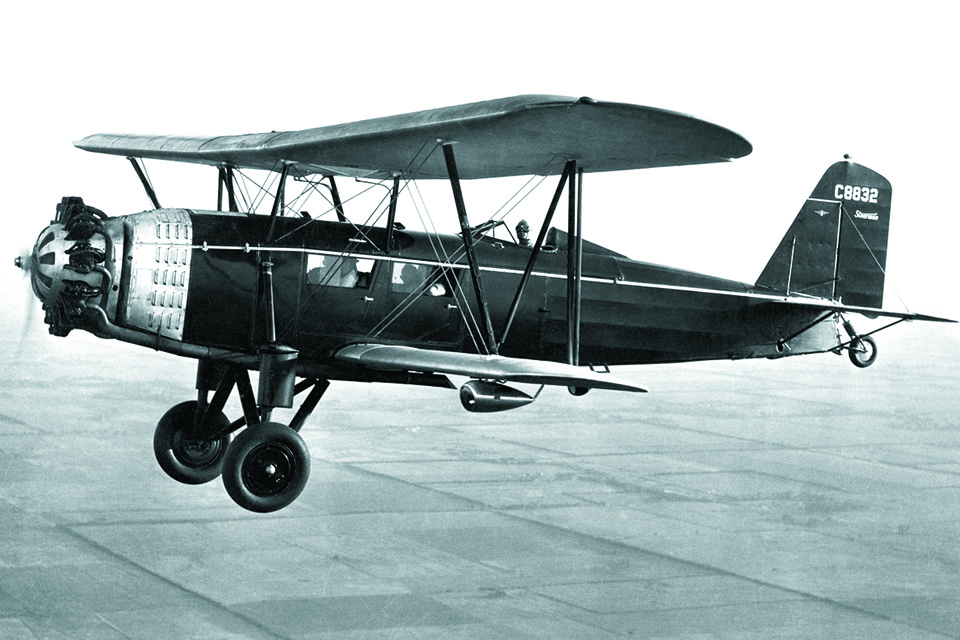
Thanks to the flying fever that struck America in the wake of Charles Lindbergh’s epic solo transatlantic flight, sales in 1928 were brisk, and the factory operated two shifts to keep pace with demand. Stearman’s bread-and-butter product, the C3B, was popular with sportsman pilots and businessmen, and in mid-1929 the company introduced its C3R Business Speedster powered by a 225-hp Wright J-6-7 radial engine. The LT-1 cabin biplane also made its debut. Built as a derivative of the M-2, the LT-1 carried four passengers in a forward cabin and nearly 1,000 pounds of mail.
To fill a gap in their product line, Stearman and Mac Short designed an intermediate-class biplane designated the Model 4. Smaller than the M-2 and LT-1 but larger than the C3R, it was well suited to a variety of tasks. The Model 4 entered production in the fateful month of October 1929. It proved popular with airmail contractors, wealthy sportsman pilots, oil companies and airlines, and remained in production into the early 1930s.
In 1929 Wall Street was booming; although signs of imminent collapse were clearly visible, they went largely unheeded. Among the targets for takeovers and acquisitions were airplane companies, including Stearman’s successful operation. Wichita was living up to its reputation as the Air Capital of the World: In 1928 the Stearman Aircraft, Travel Air and Cessna Aircraft companies had built more than 900 airplanes, and they forecast production of twice that number for 1929.
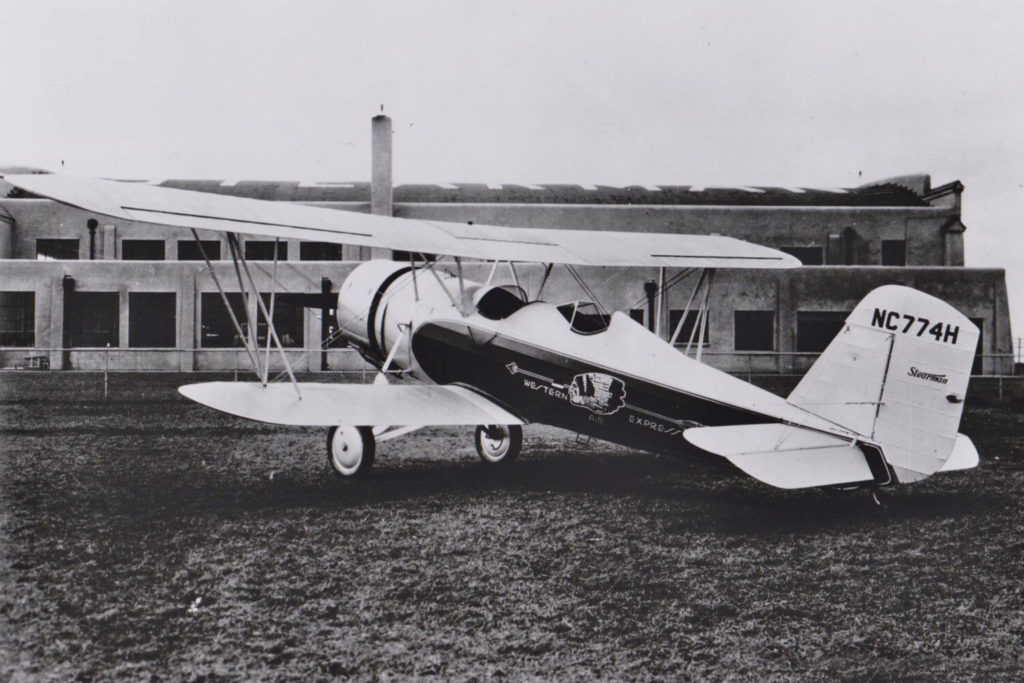
A number of investor groups approached Lloyd Stearman about acquiring his company, but he quickly rejected their offers. However, in July 1929 the giant United Aircraft & Transport Corporation succeeded where others had failed. UATC added the Stearman Aircraft Company to a conglomerate that already included the Boeing Airplane Company, Pratt & Whitney Aircraft, Chance-Vought Corporation, Hamilton Aero Manufacturing Company and Sikorsky Aircraft Corporation.
As the summer of 1929 faded into autumn, Wall Street teetered on the brink of disaster. The day of reckoning finally arrived on October 29 when the market crashed, with aviation among its earliest casualties. By late 1929 sales had slowed, and Stearman was forced to begin trimming the company’s workforce. With the commercial market for airplanes drying up fast, the board of directors turned its attention to other opportunities such as airline and military contracts. As for UATC officials, they were still reeling from “Black Tuesday,” but they were determined to hold their shaky conglomerate together and weather the economic storm.
Although Lloyd Stearman knew that being a cog in the corporate wheel of the UATC machine had its business advantages, he was becoming restless once more. He was not happy being a manager—he was a designer, an engineer and an innovator—and he longed to strike out on his own again.
Despite his growing discontent with UATC and its management practices, Stearman forged ahead, designing the Model 6 Cloudboy, a spartan, utilitarian biplane intended to be the company’s entry-level product. Powered by small radial engines in the 150- to 300-hp class, the Model 6 held promise as a primary trainer for the military, particularly the U.S. Army Air Corps, which was seeking proposals for a new trainer to replace the aging Consolidated PT-3. First flown in the summer of 1930, the Cloudboy was modified to meet military requirements under the designation of YPT-9. The Army, however, rejected the YPT-9 in favor of the Consolidated YPT-11. Only 10 Cloudboys were built, and all were sold to commercial customers.
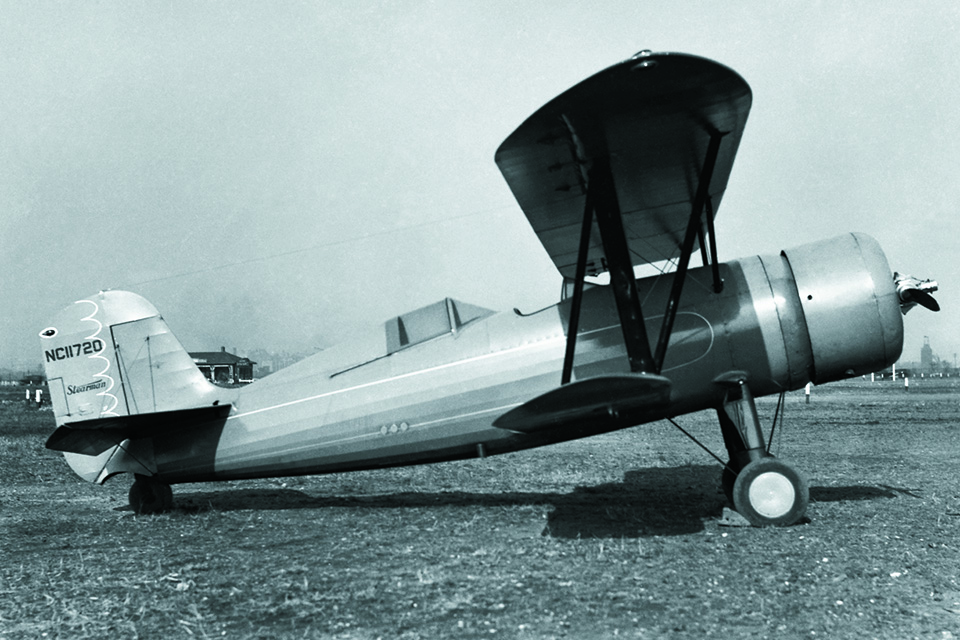
The company lost more than a military contract, though; it lost Lloyd Stearman. In July 1931 he resigned, and in October he moved with his family back to California. Stearman joined forces with his old friend and loyal customer Walter Varney and businessman Robert Gross to form the Stearman-Varney Aircraft Company. It was an unlikely venture given the Depression’s tightening grip on America. The trio acquired the assets of the Lockheed Aircraft Company, a division of the defunct Detroit Aircraft Corporation, for a mere $40,000.
Always looking forward, Stearman had been working on the design of a revolutionary all-metal cabin monoplane during the summer of 1931. It would evolve into the Lockheed Model 10 Electra that first flew early in 1934, and it represented the future of commercial aviation in the United States.
With Lloyd Stearman’s departure, the Stearman Aircraft Company struggled to keep its doors open. It did so chiefly by building components for the new Boeing Model 247 and refurbishing Boeing Model 40 airmail biplanes that were being retired in favor of all-metal monoplanes such as Jack Northrop’s innovative Alpha and Boeing’s revolutionary Monomail. Julius E. Schaefer, a former Army aviator and successful automobile salesman who had joined Stearman Aircraft in 1928, was named president in September 1933. A talented marketer, Schaefer had played a major role in driving sales upward during the company’s glory days of 1928-29. With the commercial market still in shambles, he decided Stearman should focus on military contracts.
Mac Short and his team of engineers were assigned the task of designing a new primary trainer that would attract the attention of the Army Air Corps and the U.S. Navy. Based on a preliminary drawing of a modified Cloudboy completed by Lloyd Stearman in 1931, Short’s team modified the design into the Model 70. The sole prototype flew in January 1934, with company test pilot “Deed” Levy at the controls.
The biplane was evaluated at Wright Field by Army pilots and at Naval Air Station Anacostia near Washington, D.C. Both Army and Navy aviators were impressed with its overall handling and flight characteristics, but no orders were forthcoming until May 1934, when the Navy ordered a modified version designated NS-1 (Stearman Model 73, which later evolved into the N2S series). The order for 41 airplanes was a major victory for Schaefer and the company.
As workers toiled to deliver the first NS-1 trainers, Stearman came under the supervision of the Boeing Aircraft Company, and it increased efforts to win orders from the Army Air Corps. In 1935 the Army ordered 20 newly upgraded Model 75s, designated PT-13 and powered by a 9-cylinder, 225-hp Lycoming radial. The two contracts were worth more than $400,000. Schaefer scrambled to hire and train workers to complete the aircraft on schedule.
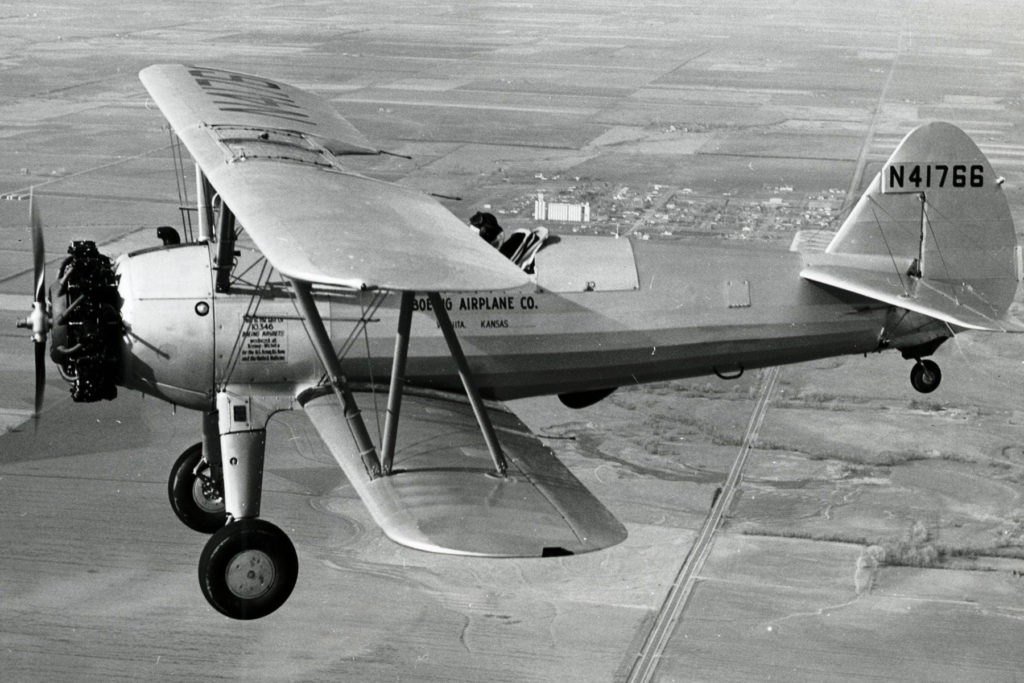
The orders were part of a modernization program by the Army and Navy to upgrade their aviation fleets after years of neglect by Congress. With Adolf Hitler’s rise to power in Germany and Japan’s ongoing war against China threatening world peace, President Franklin D. Roosevelt knew the U.S. had to begin rearming and reequipping its military forces in preparation for a potential conflict.
In 1935 the Army Air Corps established the General Headquarters Air Force, a combat air organization that evolved into the Air Force Combat Command. Its chief purpose was to develop and test aerial strategic and tactical doctrines. One of the AFCC’s integral components, the Materiel Division, focused on the massive task of training thousands of young men to fly bombers, fighters and transports.
Through 1936-37 more contracts for primary trainers, plus fabrication of components for Boeing’s new B-17 Flying Fortress heavy bomber, kept fattening Stearman’s order books. Hundreds of workers were hired, and the factory completed a new trainer every day. Every few days Army and Navy pilots flew them away to Randolph Field in Texas and Naval Air Station Pensacola in Florida.
In April 1938 the Stearman company was renamed the Stearman Division of Boeing. Schaefer remained at the helm as first vice president under Boeing President Clairmont L. Egtvedt. As 1938 gave way to 1939, war clouds were gathering over Europe, and diplomatic relations between Washington and Tokyo became increasingly strained. In response, America stepped up its war preparations, and the economy soared to unprecedented heights as millions of men and women went to work creating President Roosevelt’s “Arsenal of Democracy.”
The Stearman Division, already hard pressed to keep up with skyrocketing demand for new trainers, in June 1940 received more orders for hundreds of additional PT-13, PT-17 and N2S aircraft. The factory underwent multiple expansions to accommodate increased production, and by September 1,400 employees were working three eight-hour shifts, six days a week, and completing a new trainer every three hours.
Production reached a frenetic pace, and by April 1941 the workforce had increased to more than 3,000. In March 1941, the Army and Navy accepted the 1,000th and 1,001st primary trainers built since the national defense program began in 1939. Only five months later the 2,000th trainer rolled off the assembly lines.
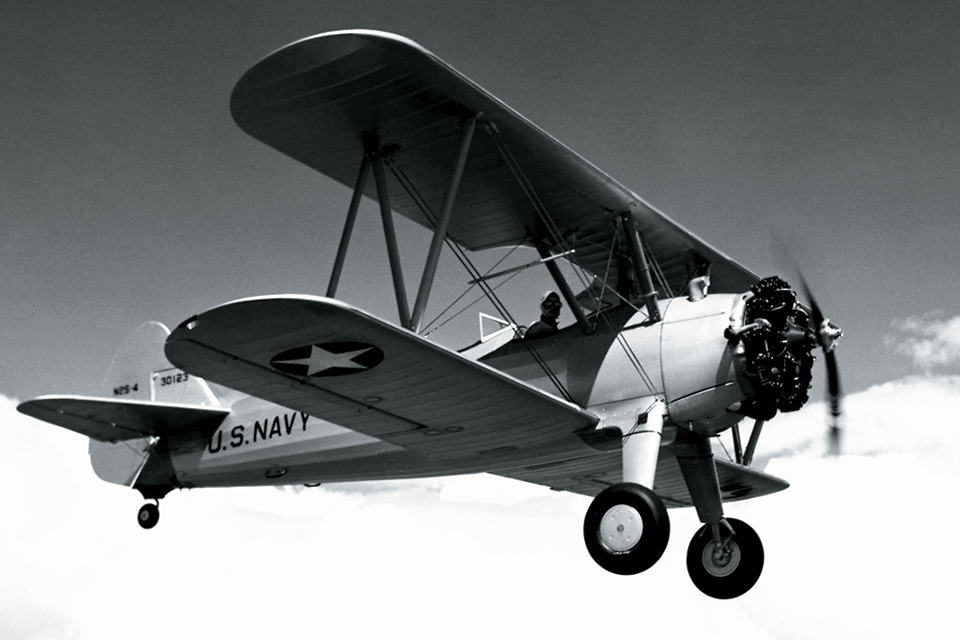
Japan’s surprise attack on Pearl Harbor in December 1941 threw the entire United States military/industrial complex into overdrive. Although the hardware of war was being manufactured at unheard-of rates, the pace of pilot training fell far short of requirements. In the wake of that shortfall, orders for thousands more primary trainers were placed with the Stearman Division. During 1942-43 the excruciating pace of production left no time for celebration as the factory completed its 3,000th, 4,000th, 5,000th and 6,000th Stearman trainers and quickly ferried them to their bases of operation.
In April 1943, production reached a peak of nine airplanes completed per day and 275 in that month, among them the 7,000th trainer built by the division. Stearman employees had met the seemingly overwhelming challenge of building more and more trainers each month, and the military services had used those aircraft to good effect. From July 1939 to August 1945, the Army Air Forces graduated 768,991 pilots. Of those, 233,198 completed primary training, and a majority of them earned their wings flying a PT-13 or N2S.
When the war ended in August 1945, the Boeing Aircraft Company’s Wichita Division (which included the Stearman facilities), along with the Cessna Aircraft Company, Beech Aircraft Corporation and Culver Aircraft Company, had manufactured more than 25,800 aircraft, plus spares to build another 5,000. Of that total, the Stearman factory had built 8,584 primary trainers, or about 44 percent of all such aircraft built during the war. Thanks to increasingly efficient manufacturing techniques, the hours required to produce one airplane fell to 878 in July 1943 from a high of 2,512 in April 1940.
Boeing’s Wichita manufacturing juggernaut also produced 1,644 B-29 Superfortresses during the war, eventually reaching an astounding production rate of 4.2 bombers per work day for an average of 100 per month—a remarkable reflection of America’s industrial might that neither Germany nor Japan could hope to match. These impressive accomplishments were a testimony to the dedication of American workers, to Wichita’s workforce and to the resiliency of the company that Lloyd Stearman had founded nearly two decades earlier.
As for Stearman himself, after serving as president of Lockheed from 1932 to 1934, he worked as a designer and engineer for a variety of aviation-related companies, some of which he founded in partnership with others. For a time after the war he specialized in modifying the military surplus trainers so closely associated with his name to serve as crop-dusters. Stearman rejoined Lockheed in 1955, working on VTOL projects as well as the Constellation and F-104 Starfighter. After retiring from Lockheed in 1968, he formed his own company yet again, looking to build a new turboprop-powered multipurpose plane. He died in 1975 before he could complete it.
When aviation luminaries and other mourners gathered at the National Sawtelle Cemetery in California, they heard eulogies to a man who had begun his involvement with the fledgling aeronautics industry in 1919 and never looked back. After a career spanning more than half a century, Lloyd Stearman—aviator, designer, engineer and entrepreneur—had earned his place in the annals of aviation history. He was enshrined into the National Aviation Hall of Fame in 1989.
Longtime contributor Edward H. Phillips is the author of Stearman Aircraft: A Detailed History, which he recommends for further reading. Also try Wings of Stearman, by Peter M. Bowers, and Stearman: A Pictorial History, by Jim Avis and Martin Bowman.
Originally published in the November 2009 issue of Aviation History. To subscribe, click here.

